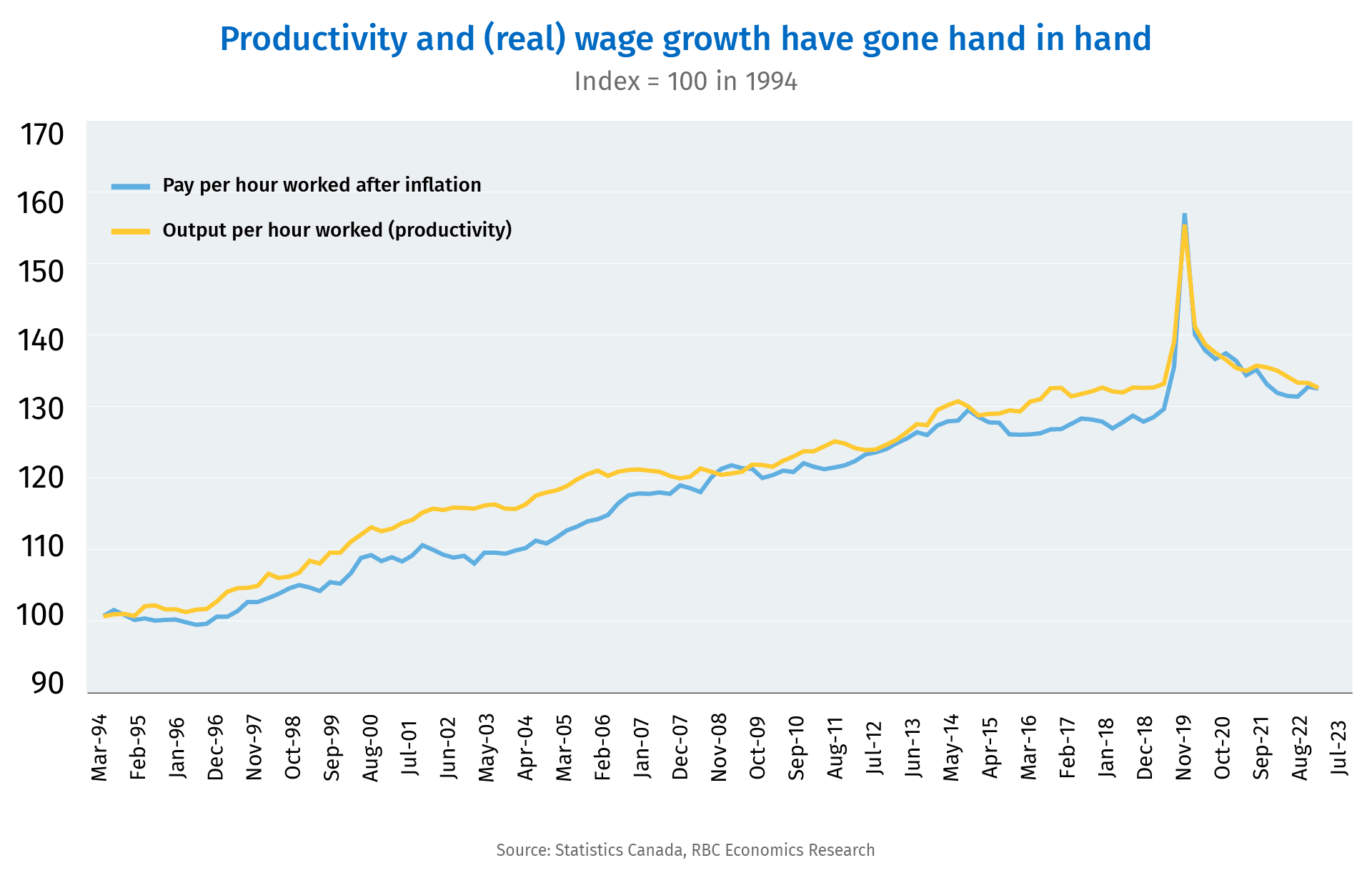Canadian Dollar: Deteriorating Productivity Threatens Wage Growth Sustainability in Canada
- Written by: Sam Coventry
-

Image © Adobe Images
In the aftermath of the pandemic, Canada's economic landscape has been marred by persistent challenges, with productivity concerns taking centre stage, according to new research that has implications for the Candian Dollar.
Nathan Janzen, Assistant Chief Economist at Royal Bank of Canada, has unveiled findings that shows the nation's weak productivity performance since the pandemic is jeopardising the sustainability of wage growth, exacerbating concerns amidst surging inflation.
"Canada’s weak productivity growth has gotten worse since the pandemic, increasing unit labour costs without the same rise in wages—and strength in U.S. productivity is cutting further into Canadian wage competitiveness," he says.
"Average wages in Canada jumped higher during the pandemic, almost entirely because job losses were heavily concentrated at the low end of the earnings scale," he adds.
However, "when workers started to emerge from lockdowns, and inflation began to surge higher in 2021, wage growth lagged, cutting into household purchasing power."
Image courtesy of RBC.
Janzen explains that when productivity rises, it means that more output is generated with the same number of hours worked.
"That boosts profit for businesses but also creates room for wage growth without lowering businesses’ bottom lines. Productivity normally increases over time as businesses innovate, buy new equipment, and workforce skills improve," he says.
The general rule of thumb is that higher productivity can underpin currency strength if it allows a central bank to hold interest rates higher relative to its peers. The longer-term Canadian Dollar outlook could rest on how Canada's productivity evolves.
Assessing various estimates, Canada's overall productivity trend underscores a modest growth in real wages, which pales in comparison to the robust labour market conditions witnessed during the early stages of the pandemic recovery.
"Worker productivity and compensation are inextricably linked," Janzen emphasises, "underscoring the importance of addressing productivity challenges."
Image courtesy of RBC.
"The level of output per hour worked in Canada at last count (Q3 2023) was below average levels four years earlier in 2019," Janzen highlighted, adding that this places Canada fifth among G7 economies for productivity growth over the period, significantly trailing the United States.
Factors contributing to Canada's productivity woes include "a prolonged period of low business investment and inefficiencies in harnessing the skills of new immigrants," Janzen explained. Additionally, "near-term labor market dynamics, marked by fluctuating supply and demand, have tilted the balance of power in wage negotiations away from workers," he added.
"In the long run, sustained growth in wages hinges on bolstering productivity levels," Janzen asserted. However, he cautioned that "the current landscape offers little optimism for a substantial acceleration in productivity growth in the near term."
Image courtesy of RBC.
Addressing these challenges necessitates a multifaceted approach, including "incentivising productivity-enhancing business investments and optimising the utilisation of immigrant skills," Janzen suggested. Moreover, "ensuring sustained growth in worker pay above the rate of inflation is contingent upon addressing the underlying causes of weak productivity performance," he concluded.
As Canada navigates the complexities of post-pandemic recovery, fostering a conducive environment for productivity growth emerges as a critical imperative.
Failure to address these challenges risks hampering long-term economic prosperity and undermining the foundation of wage growth sustainability.
In the quest for economic resilience, policymakers and stakeholders must prioritise initiatives to revitalise productivity growth, thereby safeguarding the livelihoods of Canadians for generations to come.


